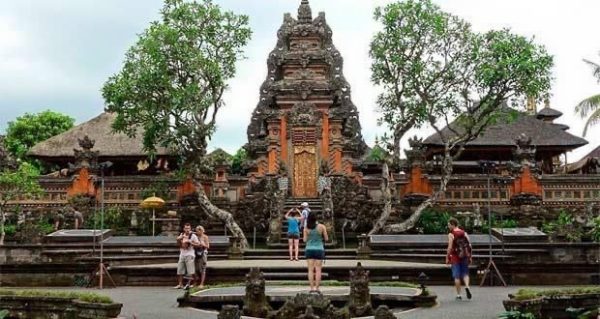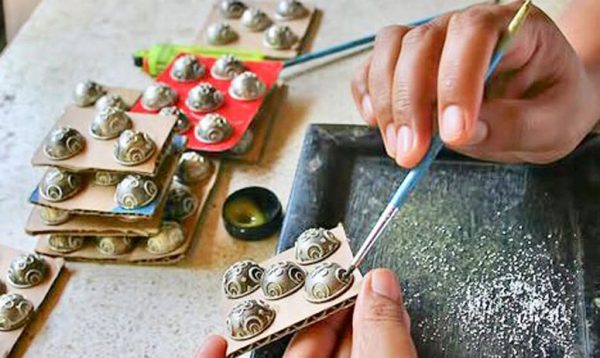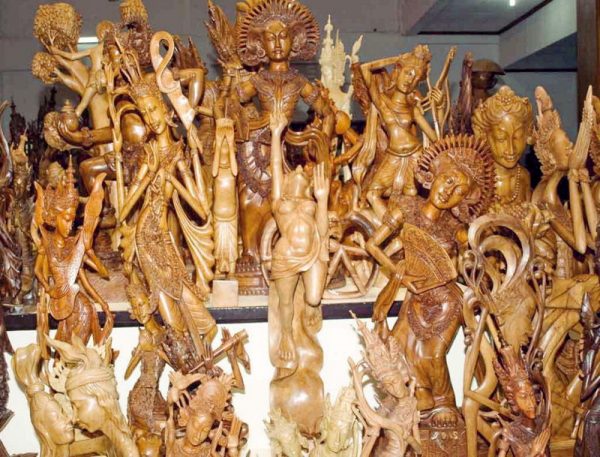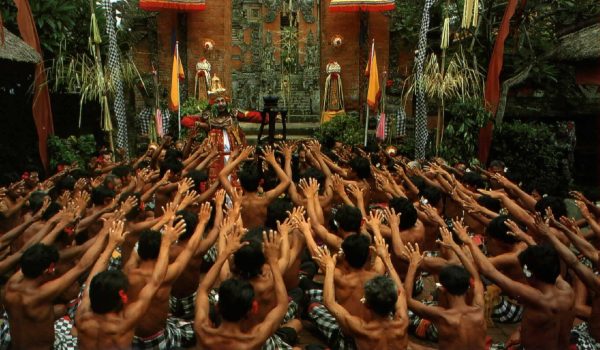The peaceful village of Ubud take it’s name from the Balinese word “Ubad” which means “medicine” as the original pilgrims who founded the village found the nearby forest to be full of medicinal herbs. In the last fifty years this village has developed into a tourist resort. At the center of the village is a crossroad, with the Royal Puri Ubud on one corner and the community hall and theatre opposite. Accross the road from the palace is a new shopping center and market. The Ubud market comes alive every three days when villagers come from near and far to sell their produce. Our bali nature holiday package visit Ubud is famous for its painter’s community, Ubud is special in more ways than one. It has it’s own magic, and its particularly beautiful surrounding and gracious way of life have drawn celebrities and artists from all over the world in recent decades; some have even adopted Ubud as their own home. The magic is easy to find-just take a walk south of the village through its terraced paddy fields to the monkey forest. Fresh water spouts out of the sheer rock at the ravine, and a bath in a secluded, shady spot is purifying.

One of the most respected dance groups in Bali perform several nights a week in the outer courtyard of the principal palace, at the northeast corner of the central crossroad. Their backdrop is a grand gate, kori agung, built bu Ubud’s most famous artists, I Gusti Nyoman Lempad. It separates the outer courtyard from the inner sanctum of the palace where the current ruling Cokorda lives. The Puri Saren was demolished by the great eartquake of 1917, so the maze of courtyards, pavilion, and elaborate gates extending far behind the Kori Agung were mostly built soon thereafter.

Merajan Agung
The towering gate above a steep flight of steps immediately north of main palace is one of the finest of its kind, with a striking pyramid of Boma faces rising above its door. This is the main entrance to the Merajan Agung, the private palace temple of the Royal Family within which are housed the palace’s most revered heirlooms. This palace is included on our bali nature holiday package.

The type of monkeys that live in the area of Monkey Forest Ubud know as the Balinese long tailed monkey, in scientific called Macaca fascicularis and in english called macaque. There are about 600 monkeys living this area. They are divided into 5 groups: in front of the main temple, eastern, Michelin, central, and cemeteries. Each group consist of 100-120 monkeys which: infants (0-1 year), juvenile 1 (1-2 years), juvenile 2 (2-4 years), sub adult male (4-6 years), adult female (> 4 years), and adult male(> 6 years).
Because of the considerable population, the conflicts between groups of monkey cannot be avoided. Sometimes for a specific reason, such as a bath to the river in the dry season, certain groups must cross the groups territory.
This type of primate is active during the day and rest at night. The pregnancies of female monkey are about 6 months and generally 1 infant is born. Very rarely are twin. Monkey,s baby stays with their mother for about 10 months and thereafter will be weaned to live independently. Mating can occur throughout the year with higher intensity happened in May to August. Monkeys mother are keeping their babies intensively; even female monkeys who are not the parent also participated in keeping the baby monkey. The average weight of female monkey is 2.5 – 5.7 kg and male monkey is 3.5 – 8 kg. The lifespan of male monkey up to 15 years while female monkey up to 20 years. The long tailed monkeys are omnivores. In the Monkey Forest Ubud, the main food of the monkeys is sweet potato, given 3 times a day and combine in daily with; banana, papaya leaf, corn, cucumber, coconut and other local fruits.


Tegallalang rice terrace is one Bali’s most famous tourist attractions. Located north of Ubud at 600m above sea level. Tegallalang Rice Terrace is one of the best spots when we visit Ubud because we will see terraces with beautiful views and very sloping layers.
Although the size of the terraces is not as wide as the terraces in Jatiluwih, this terracing is the pride of the Balinese people.

Tegenungan Waterfall is a waterfall located in Kemenuh Village, Sukawati District, Gianyar Regency, 30 km from Denpasar City. This waterfall has a height of 15 meters. Although not very high, the water discharge is very heavy. The water is also clean and clear.

Tohpati Village Batik Products
The types of batik woven crafts and traditional writing in Tohpati village produce a variety of motifs, shapes and materials. Prices start at tens of thousands to millions of rupiah. Being a mandatory place to visit while on a tour in Bali, as a tourist shopping area provides a selection of souvenir items typical of Bali, available from women’s batik shirts, men’s shirts, nightgowns, fans, paintings, various bags, wallets and various other knick-knacks with batik motifs. The price offered is in accordance with quality, all high quality. Suitable for your own needs, gifts or special gifts for relatives, friends and other loved ones at home.

Our daily bali nature holiday package will visit Celuk village. The silver and goldsmiths of Celuk, long famed for thier delicate work, are in the midst of a great bustle of production, as orders for export of contemporary jewellery have more than quadrupled in the past few years. The skills of the Celuk artisans are such that they can move effortlessy from their traditional art of highly decorative filigree ornamentation to the streamlined geometrical shapes of today, creating contemporary pieces that are populer the world over. The cottage industry has spread troughh the entire village, far beyond the rows of ornate artshop buildings that front the main road, to the family compounds, where children work beside their elders, learning the skills of the art from a very young age.

This village is very famous on bali nature holiday package and about 2 miles beyond Batuan, at a thrty-three-foot stone statue of an exceptionally well-fed baby Buddha, the main road takes a sharp turn to the right, while a smaller one contonues straight up the hill toward Ubud, passing first through the prosperous village of MAS. While Ubud and Batuan were attaining fame in the 1930’s as centers of painting, Mas was firmly staking its claim to became Bali’s preeminent center of modern woodcarving. Long before reaching the village itself, the first shops begin appear, offering anything from crude mass-produced carvings in local soft wood which can be bought for less than a dollar, to work of recognized masterd fine-grained ebony, jackfruit, or sandalwood that can set one back many thousands of dollars. The skills of Mas did not descend out of the blue but evolved over many generations. Woodcarving was traditionally the exclusive domain of powerful clan of Brahmana, the high-priest caste which, as in Batuan is exceptionally well represented in Mas. Until this century, these craftsmen confined their activities to producing ritual objects, musical instruments, dance masks, and sacred statues, but then a few of the younger members discovered that producing carvings for export could be a profitable buisness. Several of the Brahmana artists still find time between fulfilling export orders to carve sacred art onjects for the temple.

The Kecak is one of the most populer shows amongst visitors to Bali. Performance start at dusk, with the lighting of flickering torches in a giant candelabra and the placing of offerings on the stage. Sudden shouts pierce the tranquility of the evening, and out of the darkness run a troupe of chanting men wearing black and white check sarong, chesta gleaming in the torchlight. They quickly arrange themselves in a series of concentric circles around the candelabra, where they sway and chant, one moment in unison, the next moment in syncopated counterpoint. A small group of dancers in full traditional costume perform an excerpt from the Ramayana in the midst of the waving sea of arms and bodies, dancing to the orchestrated voices. The “chak-chak-chak” of the chorus is adapted from the Sanghyang chant, and the entire performance has an ethereal quality enhanced by the flickering of the torchlight. The first Kecak was created by dancers in Bedulu, Gianyar, who were commissioned by the well-known expatriate painter, Walter Spies. The first simple version was an immediate success, and now Bali boats at least a dozen professional Kecak groups that perform regularly at the larger hotels and in special open stages built for purpose in their banjar.

